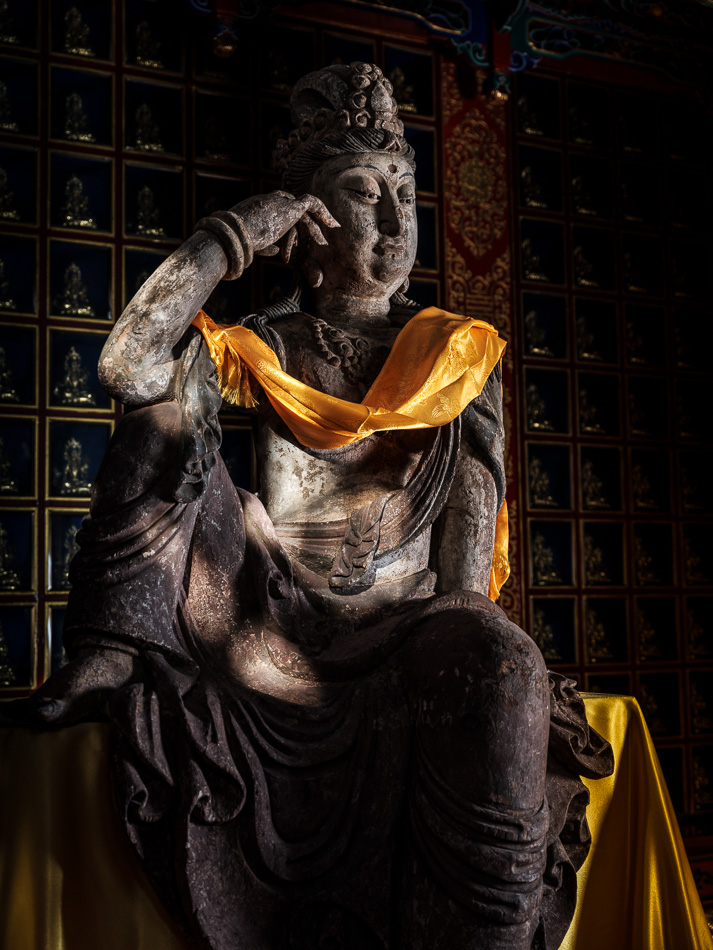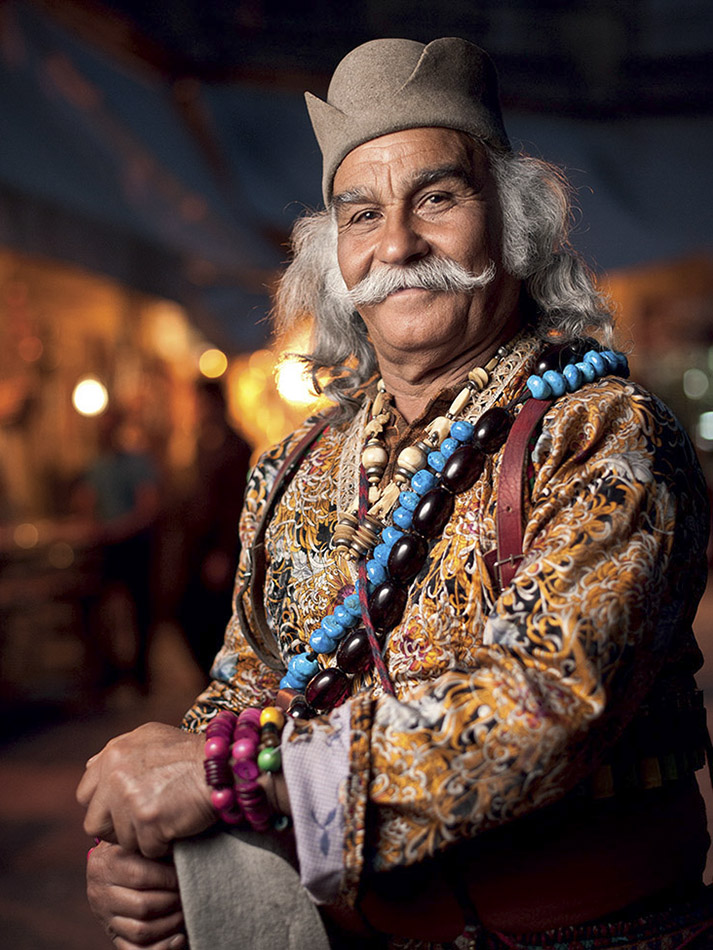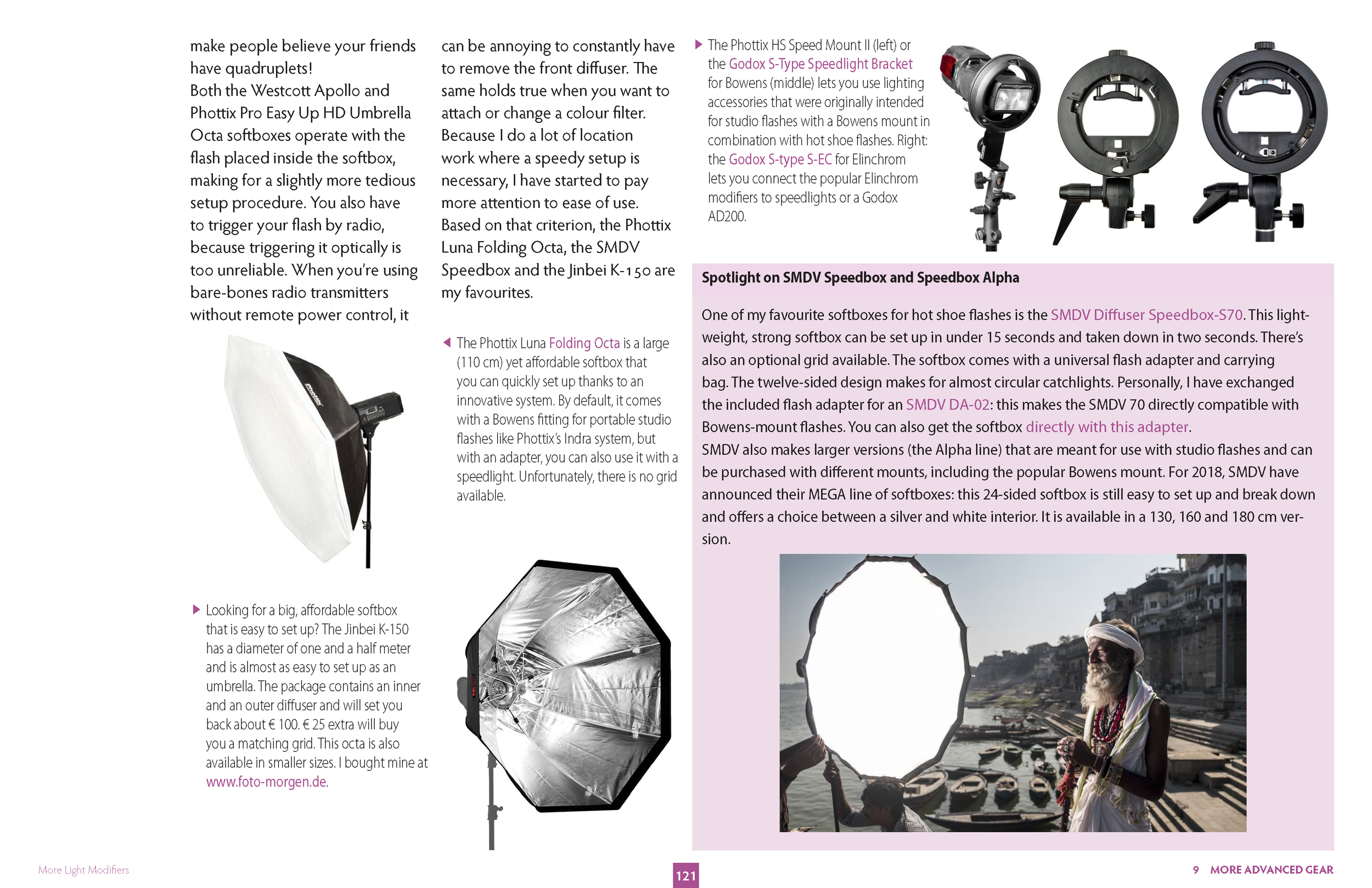Well, you might argue that one is a divine statue and the other has a fairly divine looking mustache, but that's not the answer I was looking for...
The image on the left is by my good friend, travel photographer and co-workshop leader Matt Brandon. He made it recently while on assignment for National Geographic in China. The one on the right is by me. I made it almost ten years ago, on a bicycle journey through Iran. Yes, I used to do some weird stuff back in the day. But I digress...
If you think both images share the same lighting pattern, you're already getting warmer... Both are indeed an example of short lighting, where the main light falls on the side of the face that is turned away from the camera. It's a lighting style that throws a relatively large part of the face in shadows, which adds depth and drama. It's one of my favourite lighting styles for character faces. But there's more. I won't keep you in suspense any longer...
An excerpt from the just released, 185 page second edition of my PDF ebook 'Light It Up! Techniques for Dramatic Off-Camera Flash'. This particular page talks about the difference between short and broad lighting.
Both images were lit using flash. Not because we particularly wanted to use flash, but because the available light at the time we made the images just wasn't good, in fact, it was awful. It's thanks to the fact that we had a flash with us, and that we knew how to use it off-camera, that the resulting images were deemed good enough to be used as a cover - in Matt's case for one of National Geographic's magazines, in my case for Shoot, Belgium's biggest photo magazine. These images would never have been published inside the magazines, let alone on the cover if we hadn't known how to change the crappy available light to our advantage. In fact, they probably wouldn't even have been made in the first place... Matt's written a really interesting blog post on how his attitude towards flash has changed from fear to excitement and how getting familiar with flash has opened up a lot of possibilities. Check it out, it's a great and motivating read!
There's ten years between these images, but they share on thing...
... they wouldn't have been used as a cover if we hadn't used a flash to make them look more interesting than they did just with the available light.
“Piet’s approach to lighting is simple and effective. He took me from frozen in fear to receiving compliments from the editors of the National Geographic.”
I guess this is what I want to get at with this email. All too often I hear photographers say they 'don't need flash, because their camera does ISO 1.2 zillion' or 'because they use fast primes'... Very often though, remarks like these seem to hide a deep-rooted fear for flash more than anything else.
I know, I've been there, too. But the beauty is that now is probably the best time to overcome those fears: your camera LCD will provide instant feedback on your progress, lowering the learning curve and the price of flash gear itself has come down considerably, too. In fact, I'm convinced that learning how to use flash will do a lot more for your photography and cost a lot less than buying another shiny new lens or another new camera that you don't really need.
If you want to take the plunge and get started with flash, I've got a great companion for you: the just released second edition of my ebook Light It Up! will teach you all you need to know. It starts off simple, with an overview of essential concepts, but over the course of its 185 pages, it builds up to more powerful and complex setups. It's an ebook that grows with you while you discover the opportunities of flash in general and off-camera flash in particular.
Light It Up! will probably even save you money, as it offers a lot of good-quality third-party alternatives to the expensive brand-name flashes that the camera manufacturers sell.
The book also contains loads of gear advice, so if you haven't bought any flash gear yet, I recommend you check out Light It Up! first: you'll probably save the book's price many times over because I recommend not to buy the flash gear from your camera manufacturer, but third-party gear. Generally it costs about half and is as good if not better. Almost all the examples in my book were made with third-party gear. I'd rather spend the money I save on lighting modifiers or traveling.
Save 10% on both the Standard Edition (185 page PDF ebook) or the Deluxe Edition (ebook + 3 tutorial videos + 5 Lightroom Presets) with code light2018.








